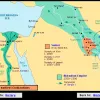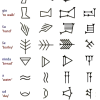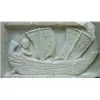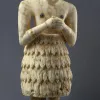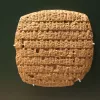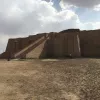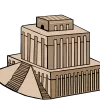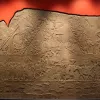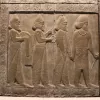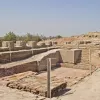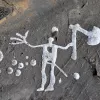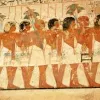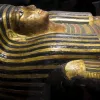Important update from TheSchoolRun
For the past 13 years, TheSchoolRun has been run by a small team of mums working from home, dedicated to providing quality educational resources to primary school parents. Unfortunately, rising supplier costs and falling revenue have made it impossible for us to continue operating, and we’ve had to make the difficult decision to close. The good news: We’ve arranged for another educational provider to take over many of our resources. These will be hosted on a new portal, where the content will be updated and expanded to support your child’s learning.
What this means for subscribers:
- Your subscription is still active, and for now, you can keep using the website as normal — just log in with your usual details to access all our articles and resources*.
- In a few months, all resources will move to the new portal. You’ll continue to have access there until your subscription ends. We’ll send you full details nearer the time.
- As a thank you for your support, we’ll also be sending you 16 primary school eBooks (worth £108.84) to download and keep.
A few changes to be aware of:
- The Learning Journey weekly email has ended, but your child’s plan will still be updated on your dashboard each Monday. Just log in to see the recommended worksheets.
- The 11+ weekly emails have now ended. We sent you all the remaining emails in the series at the end of March — please check your inbox (and spam folder) if you haven’t seen them. You can also follow the full programme here: 11+ Learning Journey.
If you have any questions, please contact us at [email protected]. Thank you for being part of our journey it’s been a privilege to support your family’s learning.
*If you need to reset your password, it will still work as usual. Please check your spam folder if the reset email doesn’t appear in your inbox.
Ancient Sumer and Mesopotamia
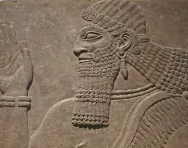
Ancient Sumer was a conglomeration of city states located in the southern part of Mesopotamia, in the region where the rivers Tigris and Euphrates meet. This area falls mainly in modern Iraq. Each city had its own patron god or goddess and a ruling priest or priest king.
Sumerian innovations include irrigation, writing, the wheel, mathematics, laws, astronomy and architecture.
Sumerian civilisation was very long lived, lasting from c5300 BC to c1940 BC – from the late neolithic Stone Age to early Bronze Age periods.
Top 10 facts
- The ancient cities of Sumer were rediscovered in the 1840s. Continual rebuilding of the cities over the centuries had raised their level above the surrounding land so they looked like hills. These ancient city hills are called tells.
- The Sumerians were excellent mathematicians and used 60 as a base. This is why we have 60 minutes in an hour and 360 degrees in a circle.
- The Sumerians developed a calendar based on the moon and the sun (lunisolar). Their months each had thirty days.
- The Sumerians were the first to develop writing. They used over 500 pictographs which over time evolved into cuneiform script.
- Each of the Sumerian city states had its own god. There were seven main gods and hundreds of minor ones.
- Sumerian ziggurats were enormous temple complexes which also contained offices, workshops and treasuries. Sumerians believed that their Gods lived in the temples and descended to earth down their stairs.
- By c2900 BC between 50-80,000 people lived in the city of Uruk. The city was walled and had an area of 6 km2.
- Sumerian houses were made of sun dried brick and faced onto courtyards. They had flat roofs which provided extra living space. Doors had hinges and keys. Wealthy people's houses had two storeys.
- The Sumerians believed that their early kings had supernatural powers. The Epic of Gilgamesh tells of the adventures of one such king.
- The Sumerians had a written law code. The earliest code of laws were those of Urukagina, King of Lagash, from 2530 BC.
Ancient Sumer Timeline
- c5300 BCFirst settlements in Southern Mesopotamia; foundation of world’s first city, Eridu
- c4500 BCUruk founded; early temples built
- c4100 BCEarly Bronze Age

- c3600 BCWriting used in Uruk

- c2500 BCReign of King Eannatum
- c2530 BCLaws of Urukagina of Lagash
- c2150-2000 BCEpic of Gilgamesh written
- c2100 BCCreation of Sumerian Kings list
- 2038 BCGreat wall in Sumer built by King Shulgi of Ur
- 1940 BCInvasion of Elamites; end of Sumerian Civilisation


Boost Your Child's Learning Today!
- Start your child on a tailored learning programme
- Get weekly English & maths resources sent direct to your inbox
- Keep your child's learning on track
Did you know?
- The Sumerians believed that their gods had given them Eridu as their first city.
- The Goddess of Uruk was Inanna, Goddess of love and war.
- The walls of the city were said to have been built by Gilgamesh.
- The Sumerians called themselves ‘the black headed people’ and their country either ‘the land’ or ‘the land of the black headed people.’
- The Sumerians loved music and played lyres and a type of oboe.
- Sumerians believed monsters guarded the gates to the world of the dead. They believed that the dead became ghosts (gidim).
- Sumerian astronomers mapped the constellations which form the basis of the Zodiac.
Ancient Sumer and Mesopotamia gallery:
- Map of ancient Sumer
- Ancient Sumerian script
- A sailboat of ancient Mesopotamia
- Statue of the ruler of Sumer, Eannatum
- Cuneiform writing on a tablet
- The remains of a ziggurat in Iraq
- An illustration of a ziggurat
- Art from Mesopotamia
Gallery
About
The river valley between the Tigris and Euphrates forms part of the so-called fertile crescent and was the site of some of the earliest civilisations, including that of ancient Sumer.
Although earlier populations had lived in small settlements along the banks of the rivers, the Sumerian civilisation was built around city states. Each city had its own ruling god or goddess, served by priests and a king who may also have had priestly duties. The king was assisted by advisors who included both men and women.
The development of irrigation and of techniques such as ploughing and domestication enabled surpluses of food (more than people needed to feed themselves) to be produced and traded. The Sumerians were amongst the first to invent the wheel and carts and chariots as well as a number of different types of boats provided transport.
Skilled craftsmen produced a range of fine goods in gold, silver, copper and bronze. An underclass of slaves, captured from neighbouring populations, undertook a range of labouring tasks. Many goods had to be imported, including metal ores. Especially prized was the cedar wood of Lebanon and cedar oil was used to make paints for pot decoration.
Trade and the need to keep accounts may have encouraged the development of writing, firstly in the form of pictographs and later as cuneiform script. Only the more important members of society could read and write and scribes had to attend school for many years to master the art.
Mathematics also flourished and branches such as geometry and algebra were developed. The Sumerians were the first to work out the formulae for the area of a triangle and the volume of a cube. Calculations such as these were useful in developing sophisticated architecture such as the arch and the dome, both of which have been found in Sumer.
Astronomical observations led to the development of the calendar and the plotting of constellations.
Prosperity and agricultural surplus led to an increase in population. At its height the population of Sumer was between 800,000-1,500,000, the majority of whom lived in cities. The need for public works such as building projects, irrigation schemes and the upkeep of the priests, rulers and armies meant that it was necessary to collect taxes, develop legal codes and enforce justice.
The Sumerian religion was polytheistic: they believed in many gods. They told stories about these gods and also about their early kings who they thought had supernatural powers.
Although the rivers had given birth to Sumerian civilisation they were unpredictable and given to flooding. This could destroy crops and leach away goodness from the soil. The water from the rivers was rich with salts and evaporation led to the soil having too much salt in it. This meant that some crops would no longer grow well. Although the Sumerians tried to grow crops that were not affected by this such as barley, the earth could no longer grow enough to feed the population. People moved away to more fertile lands and the cities grew weak. Eventually Sumer was invaded by the Elamites and the civilisation came to an end.
Related Videos
Just for fun...
Find out about rebus puzzles and how they were inspired by Sumerian writing
Read a story from the Epic of Gilgamesh
See some of the highlights of the University of Chicago's Mesopotamia collection
The world's oldest playable board game, the Game of Ur, is an ancient Sumerian race game. It dates from about 2500BC and was uncovered in a tomb in the royal cemetery at Ur in southern Iraq. You can see it yourself on display in the British Museum or watch a YouTube video showing the famous British Museum curator Irving Finkel playing the game with YouTuber and TV presenter, Tom Scott.
Can you solve a Sumerian mystery? Read the story of the Royal Tomb of Ur
Complete a quiz about the civilisation of the ancient Mesopotamia
Best books about Ancient Sumer and Mesopotamia for children
Find out more about Ancient Somer and Mesopotamia
- The British Museum's Mesopotamia website is packed with information and images
- A children's guide to Mesopotamia from DKfindout!
- Find out more about Mesopotamia's rich legacy in BBC guides
- Watch a video about the secrets of ancient Mesopotamia and find out about the clay "envelopes" the Sumerains used
- Sumer facts for kids from the Kiddle Encyclopedia
- See images of key objects from Sumer and Mesopotamian life in British Museum learning guides
- Listen to an audio description of one of the oldest writing tablets in the world
- Read about ziggurat temples
- Information about the White Temple and ziggurat at Uruk
See for yourself
- See Mesopotamian archaeological site photography
- Find out more about the world of a scribe in Sumer
- Explore the royal tombs of Ur
- Examine the Standard of Ur and listen to a BBC programme about it
- Look at a cuneiform writing tablet covered with accounting writing and pictures
- See a collection of photographs of Ur artefacts in the British Museum
- The Sumerian city states art in the Louvre Museum in Paris, France
